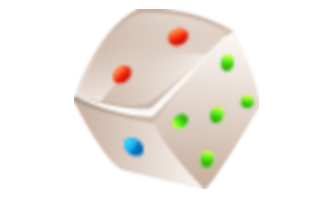Animals
Science - Second Grade
Life Cycles of Plants and Animals
Multimedia Lesson

Life Cycles of Plants and Animals
Presentation

Frog Life Cycle Matching Interactive
Interactive

Butterfly Life Cycle Matching Interactive
Interactive

Animals
Study Guide

Animals
Quiz

Animals
Flash Cards

Animals
Worksheet

Animals
Game

Animals
Vocabulary List

Growth and Development Flip Chart Set
Flip Chart

Where Animals Live
Flip Chart

All About Animals
Flip Chart

Main Parts of Plants
Flip Chart

Plant Growth
Flip Chart

Bean Plant Life Cycle
Flip Chart

Animals
Flip Chart

Animal Growth & Reproduction
Flip Chart

Frog Life Cycle
Flip Chart

Butterfly Life Cycle
Flip Chart

Dragonfly Life Cycle
Flip Chart

Inheritance of Traits
Flip Chart

Growth and Development Vocabulary
Flip Chart

Study Guide Animals
❮
1
/
7
❯
ANIMALS Kinds of Animals There are MANY different kinds of animals. The five main groups of animals are: Fish Fish live in water. Fish breathe through their gills. Fish have scales. © Copyright NewPath Learning. All Rights Reserved. Permission is granted for the purchaser to print copies for non-commercial educational purposes only. Visit us at www.NewPathLearning.com.
Birds Birds have feathers. Birds have a beak. Most birds can fly. Mammals Mammals have fur. Mammal mothers give babies milk from their bodies. © Copyright NewPath Learning. All Rights Reserved. Permission is granted for the purchaser to print copies for non-commercial educational purposes only. Visit us at www.NewPathLearning.com.
Reptiles Reptiles usually lay eggs. Reptiles have scales. Reptiles breathe with their lungs. Amphibians Amphibians live part of life in water and part on land. When they live in water, they breathe through gills. When they live on land, they breathe through their lungs. Let’s check what we have learned so far: Name one detail about a reptile. © Copyright NewPath Learning. All Rights Reserved. Permission is granted for the purchaser to print copies for non-commercial educational purposes only. Visit us at www.NewPathLearning.com.
How are animals different from each other? Animals are similar in many ways, but they are also different too! Here are some ways that animals can be different: Where Animals LIVE: Some animals live on land (like a tiger), some animals live in the water (like a fish), and some animals live on land and in water (like a frog). Some animals live in places where it is very hot (like a camel), some animals live where it is very cold (like a polar bear), and some animals live in places where it is warm (like a squirrel). Some animals live in trees (like a bird), some animals live underground (like a groundhog), and some animals live in caves (like a bear), and some animals live right on the ground (like a lion). How Animals MOVE: Some animals can fly. (like a bird) Some animals usually walk. (like an elephant) Some animals like to run! (like this lion!) Some animals can slither. (like a snake) While other animals hop. (like a kangaroo) © Copyright NewPath Learning. All Rights Reserved. Permission is granted for the purchaser to print copies for non-commercial educational purposes only. Visit us at www.NewPathLearning.com.
Animal BODY PARTS and BODY FEATURES: Some animals have two legs while others have four legs. Some animals (like snakes) have NO legs! Some animals have wings. Some animals have fur, some have no fur, and some (like birds) have feathers. Animals in the winter: Some animals go somewhere else for winter (like geese). Some animals sleep during winter (like a bear). © Copyright NewPath Learning. All Rights Reserved. Permission is granted for the purchaser to print copies for non-commercial educational purposes only. Visit us at www.NewPathLearning.com.
How animals have BABIES: Some animals lay eggs. Some animals give birth to live babies. Some animals look like their parents when they are born (like a polar bear). Some animals go through a lot of changes after they are born. Let’s check what we have learned so far: Name one way animals can be different. © Copyright NewPath Learning. All Rights Reserved. Permission is granted for the purchaser to print copies for non-commercial educational purposes only. Visit us at www.NewPathLearning.com.
What Do Animals Need to Live? Animals need water to live. Animals need food to live: * Some animals eat just plants (they are called herbivores). * Some animals just eat other animals (they are called carnivores). * Some animals eat plants ANS other animals (they are called omnivores). Animals need shelter to live too. Lastly, animals need to breathe in oxygen to live. Let’s check what we have learned so far: What is one thing an animal needs to live? © Copyright NewPath Learning. All Rights Reserved. Permission is granted for the purchaser to print copies for non-commercial educational purposes only. Visit us at www.NewPathLearning.com.
Table Of Contents: Life Cycles
1. Lesson Objectives
2.1. Life Cycles of Plants and Animals
2. Engage
3.1. Planting a Seed
3.2. A Growing Plant
3.3. Butterfly
3. Explore
4.1. Plants and Animals
4. Explain
5.1. Plants
Plants are living things that need water, air, nutrients and sunlight to grow. There are two main kinds of plants - plants with flowers and plants without flowers. Plants with flowers include fruit trees and any plant with flowers. Plants without flowers include pine trees, mosses and ferns.
5.2. Main Parts of Plants
A plant has many important parts, such as roots, stem, leaves and flowers. Each part of the plant has different functions that make it possible for the plant to live.
5.3. Roots
Roots help support the plant by anchoring it into the ground. Roots have tiny hairs that absorb nutrients from the soil, which a plant needs to grow. These root hairs also take in water from the soil, which a plant needs to live and grow.
5.4. Stem
A plant's stem is used to support the plant. The stem allows the plant's leaves to reach above the soil so that they may take in the sunshine. A plant's stem carries the water and nutrients that are taken in by the plant's roots to the rest of the plant.
5.5. Leaves
Leaves are the parts of a plant where the plant's own food is made. They use sunlight, air, water and nutrients from the soil to make their own food through a process called photosynthesis.
5.6. Flowers
The main job of the flower of a plant is to make seeds. New plants grow from these seeds. Some plants form fruit to help protect their seeds.
5.7. Parts of a Plant Interactive Matching Activity
5.8. What a plant needs to grow...
Plants need many essential things in order to grow, such as water, air, nutrients, sunlight, and warm temperature. Plants need their space too!
5.9. Germination
Germination is the process by which the plant embryo inside a seed grows and a seedling grows above the soil. A seedling is a young plant that is in its early stages of growth.
5.10. Plants have different life cycles...
Living things have different life cycles. A life cycle is the way a living thing grows and changes. A flowering plant's life cycle describes the steps a plant takes to grow and become an adult plant.
5.11. Bean Plant Life Cycle
A bean plant's life cycle includes four stages: 1. Seed - contains the embryo, which will develop into the plant; 2. Sprouting seed - germinates or grows root and stem; 3. Seedling- its first leaves make food 4. Mature plant- can make seeds that will begin the life cycle again!
5.12. Bean Plant Life Matching Interactive
5.13. Animals
There are many different kinds of animals. Animals are grouped into two kinds - animals with backbones and animals without backbones.
5.14. Animals with backbones
Animals with backbones include mammals, birds, fish, amphibians and reptiles.
5.15. Animals without backbones
Most kinds of animals do not have backbones. Animals without backbones include insects, worms, crabs, spiders and many others.
5.16. Animal Growth & Reproduction
Animals produce offspring in a variety of ways. For example, many animals have live births. The offspring develop inside the female parent which then gives birth to the live young. Other organisms, like chickens and frogs, lay eggs instead of having live births. Animal life cycles vary in how long they take.
5.17. Frog Life Cycle
Like all amphibians, frogs spend their lives near water because they must return to water to lay their eggs. The four stages of a frog's life cycle include: 1. Frog eggs are laid in water. 2. Tadpoles hatch from the eggs. They breathe with gills and swim using a tail. 3. The froglet still has part of its tail and starts to breathe using its lungs. 4. By the time a froglet becomes an adult, its tail is reabsorbed.
5.18. Frog Life Cycle Matching Interactive
5.19. Butterfly Life Cycle
Butterflies and moths go through complete metamorphosis and undergo four stages of development: egg, larva (caterpillar), pupa (Chrysalis), and adult.
5.20. Butterfly Life Cycle Matching Interactive
5.21. Dragonfly Life Cycle
Most insects go through complete metamorphosis, but some, such as dragonflies, go through incomplete metamorphosis. This life cycle includes three stages of development: egg, nymph, and adult.
5.22. Dragonfly Life Cycle Matching Interactive
5.23. Inheritance of Traits
Have you ever wondered why offspring , the young of a plant or animal, often look like their parents? This is due to the inheritance of traits, which means that parents pass on their traits to their offspring. Animals inherit traits such as the shape and color of their body parts. Plants inherit traits such as leaf shape and flower color.
5.24. Animal Variation Due to Inherited Traits
Some offspring may appear different than one or both parents. This is because the offspring receive traits from both parents resulting in a unique combination that is different from either parent. Variations in humans are height and eye color. A child's parents may both have brown eyes, yet the child could have blue eyes.
5.25. Variation Due to Environment
Characteristics of plants and animals can be affected by their surroundings, climate or diet. For example, if you eat too much you will become heavier, and if you eat too little you will become lighter. A plant in the shade of a big tree will grow taller as it tries to reach more sunlight.
5.26. Variation Interactive Matching Activity
5.27. Adaptation
An adaptation is a trait or characteristic that helps a living thing survive in its environment. For example, it takes special adaptations to be able to live in a very cold environment. Polar bears have thick blubber and dense fur to help keep them warm.
